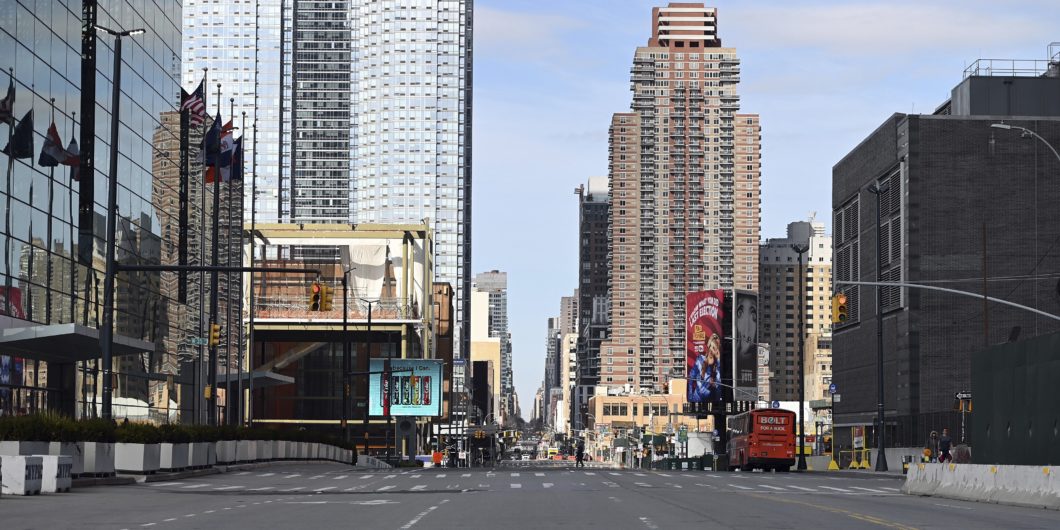What type of person is being formed by COVID rules at our colleges and universities?
The Tyranny of Visible Deaths
There is an older and now often-ignored tradition in the study of decision-making that distinguishes decision-making under risk from decision-making under uncertainty. The difference is that the probabilities are known for decision-making under risk, while the probabilities are unknown for decision-making under uncertainty. Although not an explicit part of the debate, a significant part of the debate over policy responses to the coronavirus turns on whether a policy-maker or commentator believes we are operating under risk or whether we are operating under uncertainty. This is compounded by the large variance in estimated probabilities even among those who believe we are operating under risk rather than uncertainty. Part of the problem in discussing policy options is that disagreement over whether we face uncertainty or risk has policy makers and commentators talking past one another.
“Overreaction” versus Minimaxing Preferences
One might think that policy makers and commentators who believe we face uncertainty (in the sense of not knowing underlying probabilities) cannot make policy recommendations. That’s not correct, however. They just don’t make policy recommendations that are responsive to probabilistic calculations. There is in fact a fairly well-known type of policy preference that reflects this group’s approach to policy, a group primarily proposing draconian policy responses to the viral threat. These decisionmakers hold what are called “minimax” policy preferences.
“Minimaxing” preferences are those that aim to “minimize the maximum loss.” A different way of putting it is that minimaxers seek to minimize what would be one’s worst regret for making what turns out ex post to be a wrong decision. Marginal shifts in underlying probabilities do not change the worst case situation. This is why the draconian recommendations of so many policy makers seem invariant to disagreements in what the underlying probabilities really are regarding the communication of the virus and subsequent death rates.
Minimaxers are not irrational in the narrow sense in which it’s defined by rational choice theory. It’s just a means of weighting outcomes that does not change based merely on changing probabilities. A mundane example: Many scholars hold that simple expected utility models have difficulty explaining the magnitude of voter turnout observed in countries like the U.S. Rational choice scholars early on suggested that voter participation may be rationally motivated by voters minimaxing the decision to vote. That is, they would feel profound regret if their candidate lost in a close election. So they vote even though they know it almost a certainty that their vote will not make a difference in the election outcome. Their decision does not change with changes in the relative probability that their vote will be pivotal or not.
So, too, with policy responses to the coronavirus threat. A policy-maker or commentator might very well concede that a host of reasonable probabilities exist under which the most-draconian policy interventions are in fact unnecessarily costly. Yet they would regret it more if the worst-case outcome of the virus occurred and they did not take the steps needed to avoid that outcome.
Normatively, minimaxing neglect of probabilities can serve political convenience. The use of the related “maximin” principle in John Rawls’ A Theory of Justice, for example, allows him to sidestep any number of important practical issues, including allowing reasonable tradeoffs that would nonetheless increase inequality marginally. Virus minimaxers can use minimax to the same end, to ignore costly tradeoffs implicated by their policy recommendations—and have an obvious justification for doing so in preventing deaths.
Given minimaxing preferences, policy recommendations are not based on exaggerating or overestimating the threat of the virus. Even if new data suggest it increasingly unlikely that the worst-case might be realized, minimaxers will not change their policy recommendations as long as the possibility of a worst-case outcome remains conceivable. Minimaxing preferences do not change merely with marginal changes in underlying probabilities.
The only thing that will change the minds of minimaxers is if the worst-case outcome itself changes. This last point is important to understand in the policy debate: Minimaxers will seem as though they’re ignoring data, particularly data that might show the probability of the worse outcomes occurring is lower than it might have appeared earlier. And they are in a real sense. But it’s not that they’re immune to reason, it’s that their preferences are playing off an outcome invariant to changes in the underlying probabilities, at least until the probability of a given worst outcome effectively becomes zero.
Why Optics Trump Everything
While perhaps an understandable rationality, not all policymakers who seem to be making minimaxing decisions necessarily hold minimaxing preferences. In all likelihood, many institutional leaders are forced to act like minimaxers by the optics of this virus’s risk.
First Things editor R.R. Reno, for example, recently took church officials to task for cancelling church services in light of the coronavirus’s threat. While I am sympathetic to Reno’s point (if not entirely to his snark), the thing is, the optics of the institutional setting surely make it almost impossible for church officials to keep churches open even if they are not minimaxers themselves.
Consider. You’re a bishop or archbishop trying to determine whether to go ahead with mass on the weekend. You know with a very high degree of certainty that if mass proceeds, at least several hundred parishioners (out of tens of thousands) will contract the virus. Indeed, those who contract it will be disproportionately the old ladies who unfailingly attend, and who will show up notwithstanding verbal admonitions for the elderly to stay at home. Of those who contract the virus, maybe ten will die. And they’ll die just because you didn’t cancel mass that weekend. To be sure, the medium- to long-term question of church closings differs from the short-term issue. But the pressure to close churches for a Sunday or two is certainly almost too great to resist in this situation.
The optics work perhaps even more pathologically with university officials. As some students have pointed out themselves, some students may in fact be safer in their university housing than they are at home. (I should note that some universities have allowed students to stay on campus on a case-by-case basis.) Yet university officials feel forced to shut down universities to avoid the occurrence of any deaths on their watch (and related liability issues). By sending the students home, the university will not be visibly associated with any deaths, even when the decision to send them home is the effective cause of their death. Ironically in these cases, institutional-level minimaxing may in fact is inconsistent with societal-level minimaxing. Yet the optics force the officials’ hands to push the issue out of their institutional domain.
Statistical Deaths versus Visible Deaths
Finally there is the issue of the economic cost of draconian minimax-based policy responses. This is not simply a matter of cold economics versus human life. After all, the economic hit the country takes from shutting down broad parts of the economy will increase poverty. The only question at this point is the size and length of the hit. The economic consequences of a widespread shut down could ripple for years to come.
The effects of a draconian economic shutdown in the U.S. can very well extend beyond impacts from diminished access to health care or food and shelter as a result of increased poverty. A lot of speculation regarding so-called “deaths of despair” in the U.S. suggests that increased deaths from alcohol abuse, drug abuse and suicide result from the stress and impact of substantially diminished life opportunities for these workers as well as their social isolation. The effect of shutting down the economy even for a short time seems likely to disproportionately affect this most vulnerable group of workers. To be sure, this does not mean that draconian policy options should not be implemented. But the question is not simply one of human life versus the dollar. It is one of losses from the virus relative to losses from responses to the virus. Unnecessarily exaggerated responses are not without their human costs as well.
Policy makers need to keep in mind that people themselves do not choose to live risk-free lives. The way economists compute the economic value of a human life is not to impose their value on the lives of other people. Rather, economists observe people’s lives, and observe the value we place on our own lives, because we all make tradeoffs between risk and opportunity. My own guess is that a lot of minimaxing is going on right now among policy makers and commentators because we do not have a good sense of the probabilities the virus is imposing on our social choices. Minimaxing may seem to be the only alternative in a situation like that. Minimaxers may be right that we cannot afford to wait for the arrival of good data before we make policy decisions. At the same time, it is necessary to keep in mind that minimaxing carries with it its own costs, and those costs might very well turnout to be greater than the costs of draconian policy responses to the virus itself.



